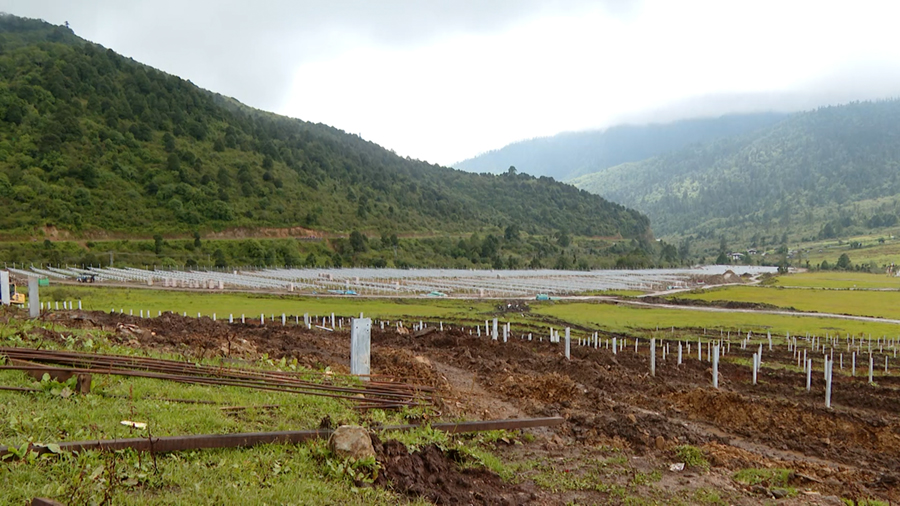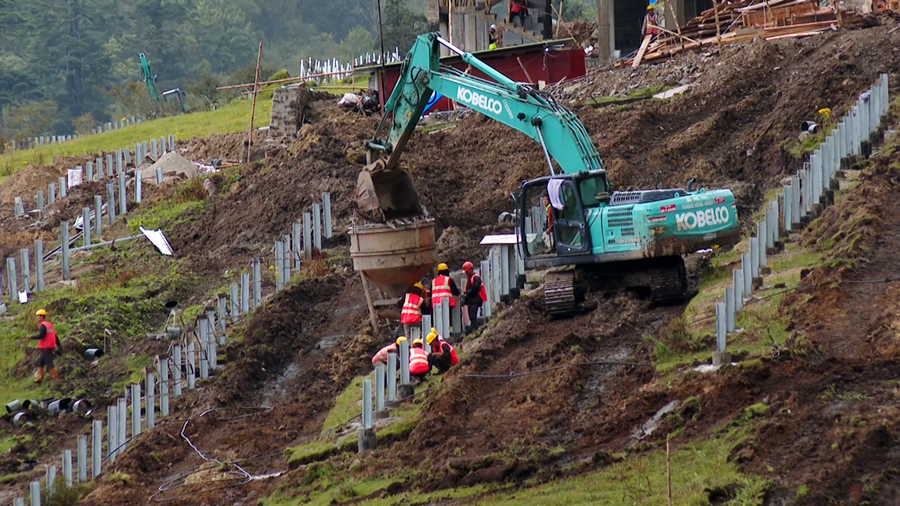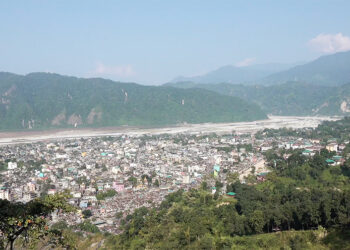
The first phase of Bhutan’s first utility-scale solar power project at Sephu in Wangdue Phodrang is set for completion by March next year. A utility-scale solar facility generates solar power and feeds it into the grid. The 17.38-megawatt solar farm is expected to generate around 24 million units of energy annually, once operational.
 Located in the village of Yongtru in Sephu Gewog, the solar project now spans 44 acres, reduced from the originally planned 65 acres.
Located in the village of Yongtru in Sephu Gewog, the solar project now spans 44 acres, reduced from the originally planned 65 acres.
Project officials say that this decrease in land use is due to the procurement of higher-wattage solar panels. Once completed, the energy generated from the farm will be fed into the national grid.
So far, the project has met its milestones without any issues.
“The actual groundwork started in March. In March and April, we were done with the procurement of modules, which is the main component of solar plants. So, we are done with the procurement of PV modules from China,” said Kinzang Wangdi, a site engineer.
The Asian Development Bank is supporting the project with Nu 830 M in grants and over Nu 685 M as loans.
The government has also invested more than Nu 82 M, bringing the total project budget to around Nu 1.5bn.
According to project officials, this solar farm is designed to support hydropower during the lean season, reducing Bhutan’s reliance on energy imports from India.
 The project is a key component of the government’s ambitious plan to generate 500 megawatts of solar energy by 2025 and 1,000 megawatts by 2030.
The project is a key component of the government’s ambitious plan to generate 500 megawatts of solar energy by 2025 and 1,000 megawatts by 2030.
With 60 per cent of the pile foundation work completed, officials say there is more to be done as the project progresses.
“After pile foundation, the next milestone is the laying and completing superstructures. Till now, we are done with around 30 per cent of the superstructures. The major activity we have coming up is the electrical works. The electrical works are expected to commence in September,” added the site engineer.
As part of their Corporate Social Responsibility initiative, the project has already paved roads in the villages of Yongtru and Longmaed.
Officials say that more community-support initiatives are being planned to assist those affected by the project.
In the second phase, the remaining 19 acres of land will be used to increase the project’s capacity to 22.38 megawatts.
The first phase of the project is set to be completed by March next year. Once this phase is complete, the second phase will involve expanding the project’s capacity to 22.38 by installing additional panels that will produce 5 megawatts of power.
The second phase will be completed by September next year.
Karma Samten Wangda, Wangdue Phodrang
Edited by Sonam Pem









